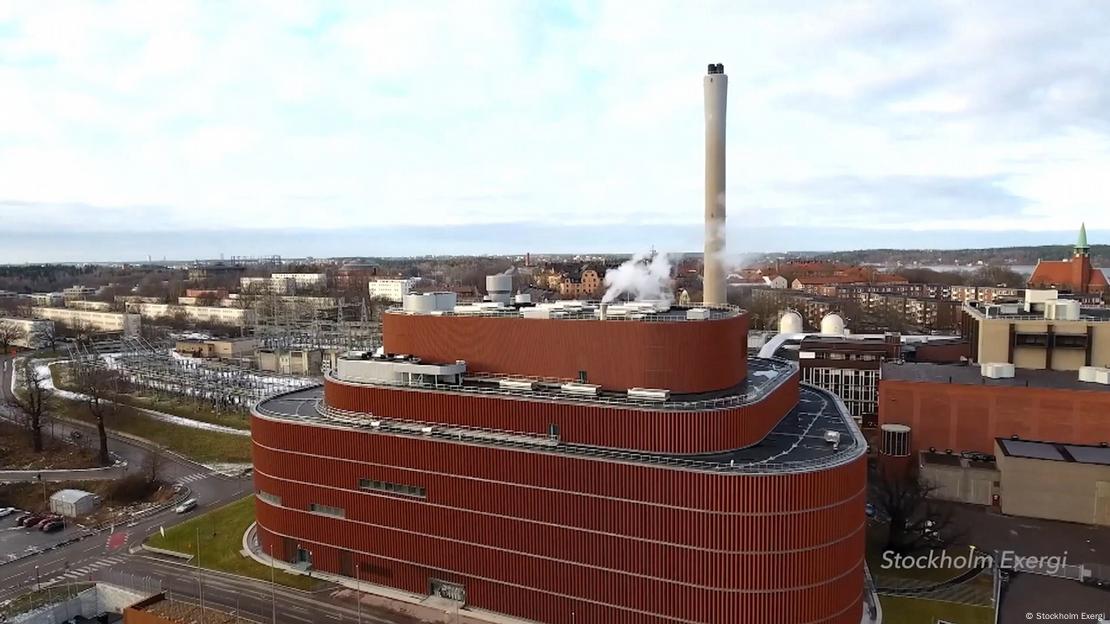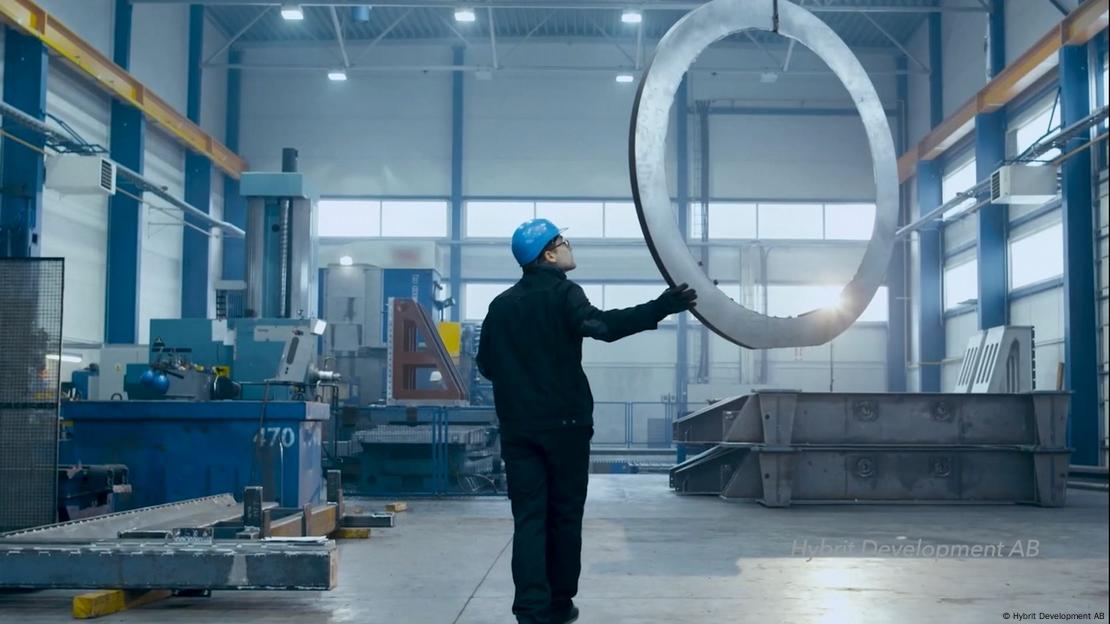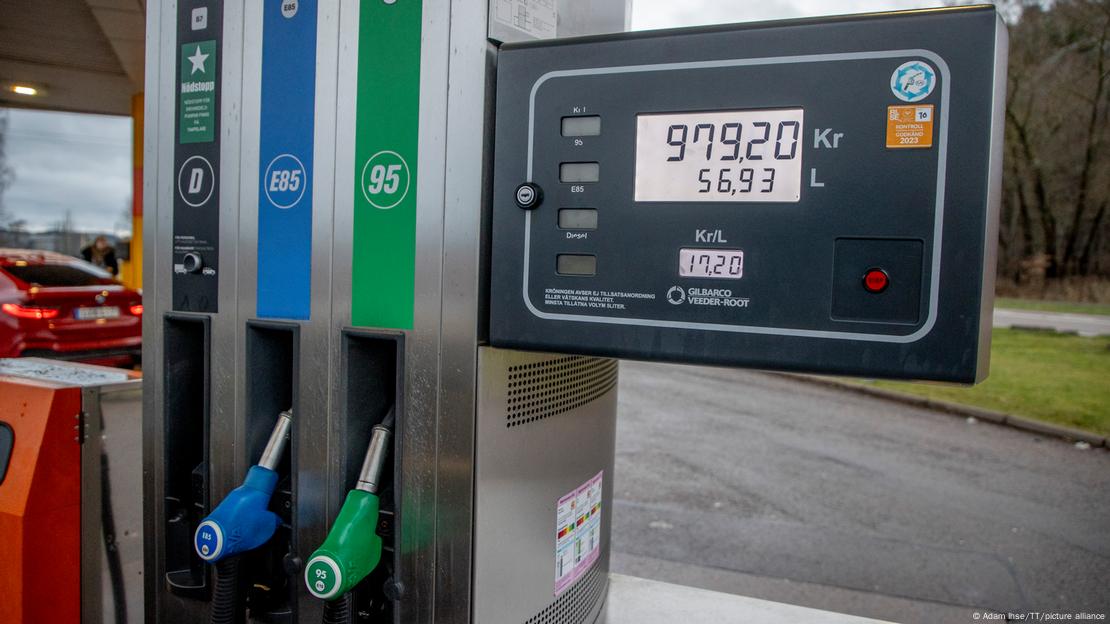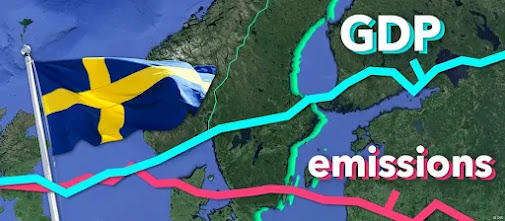Sweden has cut 80% of its net emissions since 1990 and still managed an impressive economic growth. What's the secret?
Anne-Sophie Brändlin
DW
DW
AUGUST 12, 2024
Sweden seems to have found the recipe to growing its economy while protecting the climate.
"You don't need to reduce welfare to reduce your climate impact," said Mattias Goldmann, founder of the Swedish 2030-secretariat, who works towards Sweden reaching its climate target for the national transport sector.
Sweden outperforms all other European countries when it comes to reducing net greenhouse gas emissions, according to the European Environment Agency.
The country already emitted five times less carbon dioxide, or CO2, per capita than the European average back in 1990. Since then, Sweden has reduced its net greenhouse gas emissions by another 80%, while the average reduction in the EU has only been 30%.
What's most stunning, though, is that Sweden, a heavily industrialized country which produces steel, cement and cars, managed to clean up its act — while also growing its economy twofold.
So how do you successfully decarbonize an economy while still growing it?
Investing in clean energy sources
The Scandinavian country has some natural advantages. 70% of Sweden is forest land. And forests are very useful when it comes to reducing greenhouse gas emissions because they remove CO2 from the atmosphere.
The country is also blessed with a great deal of wind, as well as mountains, streams and lakes — perfect for renewable energy.
Sweden seems to have found the recipe to growing its economy while protecting the climate.
"You don't need to reduce welfare to reduce your climate impact," said Mattias Goldmann, founder of the Swedish 2030-secretariat, who works towards Sweden reaching its climate target for the national transport sector.
Sweden outperforms all other European countries when it comes to reducing net greenhouse gas emissions, according to the European Environment Agency.
The country already emitted five times less carbon dioxide, or CO2, per capita than the European average back in 1990. Since then, Sweden has reduced its net greenhouse gas emissions by another 80%, while the average reduction in the EU has only been 30%.
What's most stunning, though, is that Sweden, a heavily industrialized country which produces steel, cement and cars, managed to clean up its act — while also growing its economy twofold.
So how do you successfully decarbonize an economy while still growing it?
Investing in clean energy sources
The Scandinavian country has some natural advantages. 70% of Sweden is forest land. And forests are very useful when it comes to reducing greenhouse gas emissions because they remove CO2 from the atmosphere.
The country is also blessed with a great deal of wind, as well as mountains, streams and lakes — perfect for renewable energy.

Sweden hardly burns any fossil fuels for electricity anymore
Image: Dalibor Brlek/picture alliance
But it wasn't just hitting the natural resources jackpot that got the country to where it is now. Sweden realized its natural potential early on and started investing in renewable energy sources much earlier than many other countries.
"Sweden has had hydropower for more than a century," according to Goldmann.
They also cut out fossil fuels from their energy mix back in the 1970s, when the global oil crisis hit. When countries were looking for other sources of energy, Sweden substantially built out nuclear energy.
Today, almost 70% of Sweden's electricity comes from renewables, especially hydropower and wind. The rest of its electricity demand is met by nuclear power. This means their greenhouse gas emissions for electricity production are almost zero right now.
"So, they are almost not using any fossil fuels for producing electricity. If you compare it with other countries, that's a whole other world," said Jorre De Schrijver, an energy expert from the European Environment Agency.
Decarbonizing heat production
And it's not just electricity that's now produced without fossil fuels in Sweden — that also goes for heating and energy-intense industrial processes.
So, what was the trick there?
But it wasn't just hitting the natural resources jackpot that got the country to where it is now. Sweden realized its natural potential early on and started investing in renewable energy sources much earlier than many other countries.
"Sweden has had hydropower for more than a century," according to Goldmann.
They also cut out fossil fuels from their energy mix back in the 1970s, when the global oil crisis hit. When countries were looking for other sources of energy, Sweden substantially built out nuclear energy.
Today, almost 70% of Sweden's electricity comes from renewables, especially hydropower and wind. The rest of its electricity demand is met by nuclear power. This means their greenhouse gas emissions for electricity production are almost zero right now.
"So, they are almost not using any fossil fuels for producing electricity. If you compare it with other countries, that's a whole other world," said Jorre De Schrijver, an energy expert from the European Environment Agency.
Decarbonizing heat production
And it's not just electricity that's now produced without fossil fuels in Sweden — that also goes for heating and energy-intense industrial processes.
So, what was the trick there?

Sweden invested in district heating systems early onImage: Stockholm Exergi
The first step was that Sweden invested in district heating systems early on, which are more efficient. This means that instead of having a heater in each home, you build big, centralized heaters that are connected to many houses and industrial areas through insulated pipes and underground infrastructure.
"You need the government and the private sector to work together to provide this infrastructure," said Asa Persson, who advises the Swedish government on climate policy and rates its performance.
It's also quite expensive — just think of all the piping you need to lay across entire neighborhoods. Nonetheless, the government decided to go for this approach early on and stuck with it.
"They saw the benefits of having these bigger system solutions. Sweden as a cold country had a real incentive to have a sort of energy efficient and sort of rational heating system in place to serve inhabitants," said Persson.
The first step was that Sweden invested in district heating systems early on, which are more efficient. This means that instead of having a heater in each home, you build big, centralized heaters that are connected to many houses and industrial areas through insulated pipes and underground infrastructure.
"You need the government and the private sector to work together to provide this infrastructure," said Asa Persson, who advises the Swedish government on climate policy and rates its performance.
It's also quite expensive — just think of all the piping you need to lay across entire neighborhoods. Nonetheless, the government decided to go for this approach early on and stuck with it.
"They saw the benefits of having these bigger system solutions. Sweden as a cold country had a real incentive to have a sort of energy efficient and sort of rational heating system in place to serve inhabitants," said Persson.
The good thing about district heating is that you can shift the fuels that such a system uses. In the past, Sweden relied on fossil fuels like oil and coal. But since the 1990s, the country attached particular importance to the development of renewable energy and energy efficiency, investing in the use of energy, especially wood fuels. Today, 97% of the heating in Sweden comes from biofuels and burning waste.
"Sweden managed to reduce emissions from electricity and heating by 70% in the last 30 years. So that also shows that big, bold changes are possible," said Persson.
Strong policies: giving people and businesses incentives
And these big, bold changes didn't come out of thin air. Sweden has implemented clear climate policies since the 1990s, such as introducing one of the world's first — and by now one of the world's highest — carbon taxes, charging individuals for the carbon dioxide they emit.
"There's a clear message for us: either we do something that's bad for the environment and we have to pay the tax, or do we do something that's better and we're not taxed," said Goldmann.
A 2019 empirical case study found that the Swedish carbon tax had a significant impact on CO2 emissions: it was responsible for a 6% decline of emissions from transport in an average year.
And it sped up the changes in the energy and heating sector by giving people and businesses the incentive to invest in renewable energy instead of fossil fuels.
While people many other countries would revolt against any new tax, acceptance in Sweden has been high.
"There has been support for environmental and climate policy for a long time in Sweden, and the country has also prided itself for being a leader in that regard," said Persson.
This is true across the political spectrum. In Sweden, seven out of eight parties agreed back in 2017 on the world's most stringent climate target: to be net zero by 2045.
"It's a world leading target that gave business and citizens a strong belief that this is actually going to continue happening and that I can invest in it knowing that even with the change of government, it will still stand," said Goldmann.

Sweden aims to become the world's first in producing large quantities of fossil free steel
Image: Hybrit Development AB
Setbacks due to Russia's invasion of Ukraine
While Sweden has taken some major steps to slash emissions, not all sectors have been successfully decarbonized yet. Transport and agriculture are currently Sweden's largest sources of emissions.
And it's especially the transport sector that's currently Sweden's biggest problem child.
Following the energy crisis caused by Russia's invasion of Ukraine, Sweden's conservative government rolled back some important policies. It lowered petrol and diesel taxes by a quarter, which means Sweden now has among the lowest prices on diesel and gasoline in Europe.
It also introduced other measures that make it less expensive to drive a car to support struggling households, while abolishing incentives that were previously offered to buy electric vehicles.
"We are increasing emissions by roughly 5 million tons of carbon dioxide per year. In fact, this is the biggest increase in transport emissions in the history of Sweden," said Goldmann.

For years, Sweden had been introducing incentives to reduce transport emissions, but those have now been rolled back
Image: Adam Ihse/TT/picture alliance
But he believes it's just a momentary setback as the government promised that these new measures will only be short-term, and that Sweden is still on track to meet its targets for the transport sector again: a reduction of 70% of emissions between 2010 and 2030.
But he believes it's just a momentary setback as the government promised that these new measures will only be short-term, and that Sweden is still on track to meet its targets for the transport sector again: a reduction of 70% of emissions between 2010 and 2030.
Lessons learned
So what lessons can other countries learn from the Swedish success story?
"Sweden, I think, illustrates that yes, it's indeed possible to produce electricity without any greenhouse gas emissions at all, and that's an example for other countries in the world," said energy expert De Schrijver from the European Environment Agency.
Can Sweden's approach serve as a blueprint for other countries?
"Find where your main climate impact is and where you can make the biggest difference. Find what is your sort of unique selling point as a country, where is your entry point, and build on that," said Goldmann.
"That will give you the green businesses, the green jobs, the billions in export income that you can use for other things that you want, better welfare, better schooling, and so forth," he added.
He says that while the situation was different in each country, it was very important to include everyone in the transition. Persson agrees.
"The biggest lesson is that you need close cooperation between government, private sector, and the local government as well to really develop these system solutions together and take risks, make these big long-term investments. That has been a success factor behind Sweden's decarbonization," she said.
Edited by: Sarah Steffen

No comments:
Post a Comment